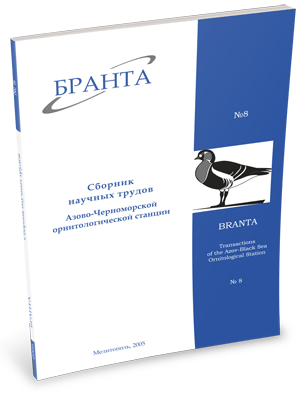
Transactions
of the Azov-Black Sea Ornithological Station



Reproductive indices of Ardeidae in the north-western near Azov area
Koshelev A.I., Koshelev V.A., Peresad'ko L.V., Pokusa R.V.
NOTE! The figures in this on-line abstract differ from those in the printed version. In the on-line abstract more accurate, not rounded figures are given.
The paper presents results of the study on a breeding biology of 8 species of herons, carried out in 1998-2003 in the north near Azov area. There were investigated 146 colonies of herons, examined 5,000 nests, 1,200 clutches, 860 broods. 2,800 eggs were oomorphologically analyzed, 5,409 chicks ringed. There were identified phenological phases of the heron reproductive period and their breeding success. The Grey Heron and Great White Egret arrive and start nesting the earliest; their reproductive period lasts 100-115 days. The paper presents the estimation of a synchronic breeding of herons in different colonies. Neighboring colonies and settlements of herons in the region were compared according to oomorphological indices; their common genesis was proved. The results of ringing proved exchange of individuals and change of nesting places within the same season and between different ones. There are given sizes of nests, clutches, eggs and broods for 8 species of herons. The most valuable is the nesting colony of herons in the plavni (reedbeds interspersed with small open water areas) of the upper Molochnyy Liman. Numbers of nesting herons and their breeding success are determined by condition of the hydrological regime and food reserves in nesting and neighboring water bodies.
Read the paper in a PDF file